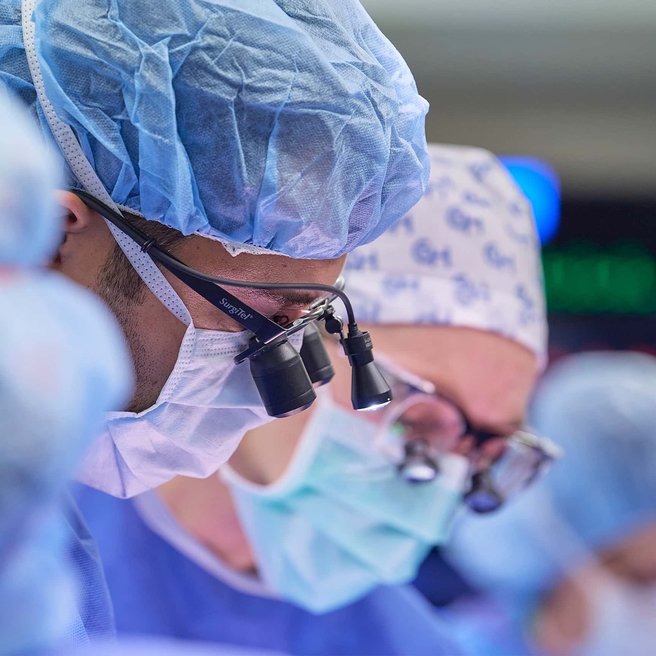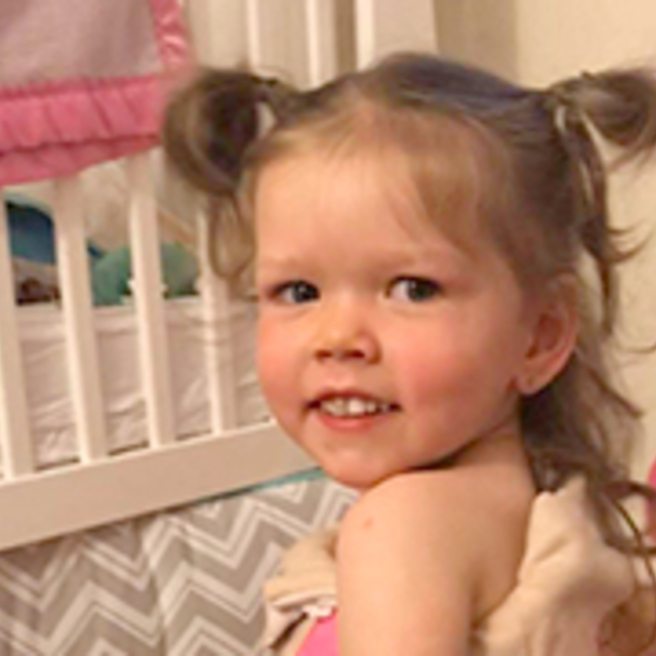What is early-onset scoliosis?
More than 100,000 children in the U.S. are diagnosed with scoliosis each year. The majority of these children are diagnosed between the ages of 10 and 15 with adolescent idiopathic scoliosis.
Identifying idiopathic scoliosis at birth or in early childhood is rare. The type of scoliosis is generally categorized by age at onset of diagnosis:
- Infantile idiopathic scoliosis, from birth to 3 years old
- Juvenile idiopathic scoliosis, from 3 to 8 years old
- Early-onset idiopathic scoliosis, which encompasses both infantile and juvenile scoliosis and covers the period from birth to age 8
Causes of early-onset scoliosis
Early-onset scoliosis is a subset of adolescent idiopathic scoliosis, and has no known cause. But unlike idiopathic scoliosis, which can be a singular spinal condition, early-onset scoliosis is often accompanied by other health issues, such as chest wall deformities, neuromuscular diseases such as spina bifida or cerebral palsy, and other factors such as benign or malignant spinal tumors.
Because of the complex issues surrounding early-onset scoliosis, children with this disorder need to be treated by expert clinicians who are part of a multidisciplinary team that has significant experience treating all aspects of the rare disorder. The Orthopedic Center at Children's Hospital of Philadelphia offers comprehensive evaluation and treatment for children with early-onset scoliosis.
Signs and symptoms of early-onset scoliosis
The most common symptoms of early-onset scoliosis are:
- Tilted, uneven shoulders, with one shoulder blade protruding more than the other
- Prominence of the ribs on one side
- Uneven waistline
- Difference in hip height or position
- Overall appearance of leaning to the side
Testing and diagnosis of early-onset scoliosis
Prompt diagnosis of early-onset scoliosis is important for successful treatment of spinal curves and optimal long-term results for children. Untreated early onset scoliosis will likely have a much more profound negative impact on overall health than the more common forms that occur in adolescents. A physician will perform a complete medical history, physical examination and visual evaluation of the curvature of your child's spine.
Imaging tests take a closer look at the spine to see if there are any problems with the bones and to measure what degree of curvature is present. X-rays are the primary diagnostic tool for early-onset scoliosis and demonstrate the precise angles of curvature.
If the curve pattern is not typical or if there is something unusual in the X-ray, a physician may order one of the following tests to provide more information:
- EOS imaging, an imaging technology that uses an ultra-low dose of radiation to create three-dimensional models from two planar images. Unlike a CT scan, EOS images are taken while the child is in an upright or standing position, enabling improved diagnosis due to weight-bearing positioning.
- Magnetic resonance imaging (MRI), which uses a combination of large magnets, radiofrequencies and a computer to produce detailed images of organs and structures within the body. An MRI does not expose your child to radiation.
- Computed tomography (CT) scan, which uses a combination of X-rays and computer technology to produce cross-sectional images ("slices") of the body. CT scans are helpful in detecting ribcage problems.
- Radioisotope bone scan or DEXA scan, which determines the health and strength of the spinal bone. CHOP's analysis of these scans is unique in that our clinicians compare your child's scan to normative data we have compiled from other children, not standard adult values.
Additionally, if your child has other associated health issues, a physician may order other examinations or consultations with experts from cardiology, pulmonology, nephrology or other specialties. Many of the conditions associated with early onset scoliosis also have problems in the extremities; our pediatric orthopedic specialists will be able to provide expert care for these conditions as well.
Treatments for early-onset scoliosis
Some children with early-onset scoliosis do not require treatment; their condition may not worsen or may correct itself as they grow. Other children with progressive curves may need immediate treatment to prevent chest wall deformity and allow normal lung development. Close monitoring of all children with early-onset scoliosis can determine which treatment path is best for each individual child.
At Children’s Hospital of Philadelphia (CHOP), we practice collaborative, family-centered care. A team of expert clinicians — including leading orthopedic physicians and surgeons, pediatric nurses, physical and occupational therapists, psychologists, and other specialists — partner with you in the care of your child.
In planning your child's individual treatment, our team of specialists will consider the severity of the curve, where it occurs in the spine, your child's age and stage of growth, as well as your child’s other health conditions.
Non-surgical scoliosis interventions
Some patients with early-onset scoliosis do well without surgery and may only need to be monitored regularly by a physician to ensure the curve doesn't worsen. Monitoring may include regular observation, X-rays and lab tests.
For some patients, the doctor may prescribe a back brace as treatment. Recent studies, including the NIH-funded BrAIST trial conducted at CHOP and other major scoliosis centers, proved that braces are very successful in halting the progression of scoliosis.
The brace will reduce pressure on your child's lower back and help prevent worsening of the curvature in the spine. It should be worn most of the time (16-20 hours a day) for optimal results.
Back bracing may also be recommended as a medical aid leading up to or immediately after spine surgery.
Body casting for early-onset scoliosis
Serial body casting may also be recommended. This is often chosen for children between the ages of 6 months and 6 years with X-ray measurements that suggest that her curve will worsen. Unlike a brace, the cast has the potential to partially or completely straighten the curve. Other times, when correcting the curve is not possible, the cast treatment can be used to delay the need for implant surgery.
Our surgeons use the elongation-derotation-flexion technique popularized by British orthopedic surgeon Min. H. Mehta, FRCS. The treatment, also known as Mehta casting, involves placing a body cast from the shoulders to the lower trunk while the child is under anesthesia. The process is repeated every few months. The treatment usually lasts one to three years.
Surgical interventions
For children with spinal curves of 40 degrees or greater, spinal surgery is almost always indicated.
Doctors will determine which surgery is right for your child depending on your child's age, skeletal maturity and other health considerations. Each child is evaluated individually, and treatment is suggested based on his long-term health needs.
Growing rods
For children who have many years of growth remaining, a growth-friendly option is preferred. In growing rod surgery, the curve in your child's back is spanned by one or two rods under the skin to avoid damaging the growth tissue of the spine. The rods are attached to your child’s spine and vertebrae above and below the curve. The growing rods help guide spinal growth and drive the spine straight.
As your child grows, he will return to the Hospital every six months for outpatient surgery to have the growing rods expanded. This approach minimizes the spinal deformity, maximizes spine growth and allows continued lung development as the child grows.
Our surgeons have pioneered the use of magnetically adjustable growing rods. These rods can be adjusted in the doctor’s office without the need for a surgery or general anesthesia. This technology has greatly reduced the number of surgeries growing rod patients require.
Vertical expandable prosthetic titanium ribs (VEPTR)
Like growing rods, the VEPTR allows continued spine growth and enhances pulmonary function. Developed by Robert M. Campbell Jr., MD, one of CHOP’s leading orthopedic surgeons, VEPTR is the most advanced treatment option for children with thoracic insufficiency syndrome, a rare condition.
Children with thoracic insufficiency syndrome have severe deformities of the chest, spine and ribs that prevent normal breathing and lung development.
VEPTR straightens the spine, but also expands the space available for the lungs and other internal organs to grow. VEPTR devices can be attached to your child’s spine, rib, pelvis or collar bone, and multiple devices can be implanted depending on your child’s individual needs.
Like growing rods, VEPTR is surgically adjusted as your child ages and reaches full skeletal maturity.
Vertebral body tethering
Our surgeons were among the first to perform vertebral tethering surgery. Learn more about this experimental surgical treatment.
Spinal fusion
During a spinal fusion surgery, the abnormal curved spinal bones are realigned and fused together. Metal implants are also inserted to correct the curvature.
Spinal fusion will effectively stop the growth of the child’s spine, which is why the procedure is generally not recommended as an initial treatment for early-onset scoliosis in younger children.
The results of spinal fusion are much more positive if the surgery is performed after your child has reached skeletal maturity. For adolescents who have achieved normal lung capacity before scoliosis curves worsened, spinal fusion can improve their quality of life and life expectancy.
Safety in spine surgery
Surgery can dramatically improve the long-term outcomes for your child with early-onset scoliosis, but it can also be a stressful experience for you and your child. At CHOP, we offer a wealth of resources that can help you and your child prepare for surgery.
Additionally, we follow many best practices before, during and after surgery to decrease the risk of infection and increase positive outcomes. Our practices have been adopted by many other children’s hospitals around the world. Some safety protocols our orthopedic surgical team uses include:
- A strict perioperative antibiotic protocol
- The use of cutting-edge navigation and imaging equipment during surgery, such as StealthStation® and O-arm® Surgical Imaging
- Continuous monitoring of anesthesia during surgery, including specialized spinal cord monitoring
- Postoperative clinical pathways to ensure quality and standardization of care processes, and rapid post-operative recovery
To learn more, read how we make safety in surgery a top priority.
About the diagnosis
10 facts about scoliosis
A scoliosis diagnosis can leave parents with a lot of questions. Learn essential scoliosis facts parents and caregivers should know about this common, treatable condition.
Follow-up care for children with early-onset scoliosis
If spine bracing was recommended for your child, he or she will be re-evaluated every six months until the condition is stable. If bracing was recommended as a treatment leading up to spinal surgery, your child will be evaluated regularly before and after surgery until your child's condition is stable. After your child's spine is stabilized, annual visits to an orthopedic healthcare provider are recommended.
If your child received growing rods or VEPTR, an additional surgery — spinal fusion — may be recommended when your child has finished growing.
For children who received vertebral body tethering — in most cases — the screws and cable used will not need to be removed or adjusted.
After treatment — whether surgical or nonsurgical — the clinical team at CHOP will continue to follow-up on your child's care at our Main Campus or one of our CHOP Care Network locations.
CHOP was the first institution in the U.S. to introduce “EOS micro-dose” for use in scoliosis follow up. Micro-dose uses one-third of the standard EOS radiation dose, further reducing radiation exposure for children who may require frequent imaging.
We recognize that your child's pediatrician is an important part of the clinical team and provide regular updates on your child's progress. If continued care and monitoring is necessary, we will help transition your child's care to an adult orthopedic team.
Outlook
The prognosis for patients with early-onset scoliosis has improved significantly during the past 10 years. Children who are treated for other disorders, in addition to the spinal deformity, may need long-term care into adulthood.
Your clinical team at Children's Hospital of Philadelphia is available to help transition your child to an adult care team, if necessary, to ensure his or her continued health.

Why choose CHOP
By sharing our surgical knowledge, clinical experience and innovative research, our program offers a depth and breadth of experience treating spine conditions that is unparalleled in the region.
Resources to help
Early-onset scoliosis Resources
Spine Program Resources
We have created video, audio and web resources to help you find answers to your questions and feel confident with the care you are providing your child.
Reviewed by John M. Flynn, MD, Patrick J. Cahill, MD


